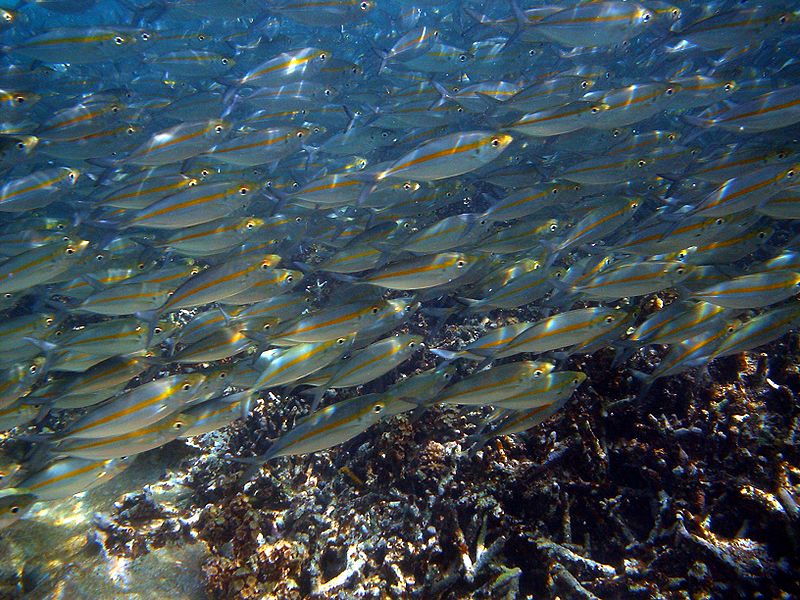Science News
Fishy Friday
November 12, 2010

Here are some recent fish stories we didn’t want you to miss.
The shape of fish schools
The Scientific American Guest Blog, written by Hannah Waters earlier this week, had an excellent explanation of fish school shapes and posed some great questions.
For years, scientists have studied how small fish pack together in large groups, or shoals, to avoid predators. The trick is to get enough oxygen on the inside of the shoal, but to avoid predators on the outside of the shoal. According to the article, “there can be enough fish packed into the center of a shoal to actually deplete the seawater of oxygen!”
Recently two scientists published a paper on the shapes and sizes of shoals, which are surprisingly very similar from school to school. As temperatures rise and oxygen levels go down in the seawater, Waters wonders what that will do to this shoal consistency.
Amphibifish
A super cool study of mangrove killfish, published in the November/December 2010 issue of the journal Physiological and Biochemical Zoology, describes how these fish can live for up to a couple months out of water.
Researchers found special cells called ionocytes clustered on the skin of the fish. Ionocytes, normally found on the gills of other fish, are the cells responsible for maintaining the right balance of water and salt in a fish's cells.
Mangrove killfish have as many ionocytes on their skin as in their gills and are able to monitor their intake of water and salinity through both.
Fish-vision
Two studies on fish vision were published recently. Locally, UCSF and UC Berkeley researchers looked at zebrafish. Zebrafish have the remarkable ability to see their tiny prey in a very large and distracting setting. Visually, how are they able to do that?
Reporting last month in Science, the team was able to pinpoint a set of nerve cells, or neurons in the brain of the fish, that filter out large background patterns from the animals’ visual perception. There’s a great video of it here.
According to a press release,
More broadly, the finding reveals a fundamental neural mechanism seen throughout the brain of vertebrates, including humans.
The BBC reported earlier this week on a study in the journal Functional Ecology that looked at stickleback vision. The males get more orange, red and yellow during the breeding season, attracting more females. The colors come from carotenoids, which are gained only through diet. The females’ attraction may be more than skin deep, the article states, because the color of the fish can accurately indicate the male fishes’ foraging and feeding success.
Anything fishy in the news that caught your eye this week? Let us know!
Image by Mila Zinkova